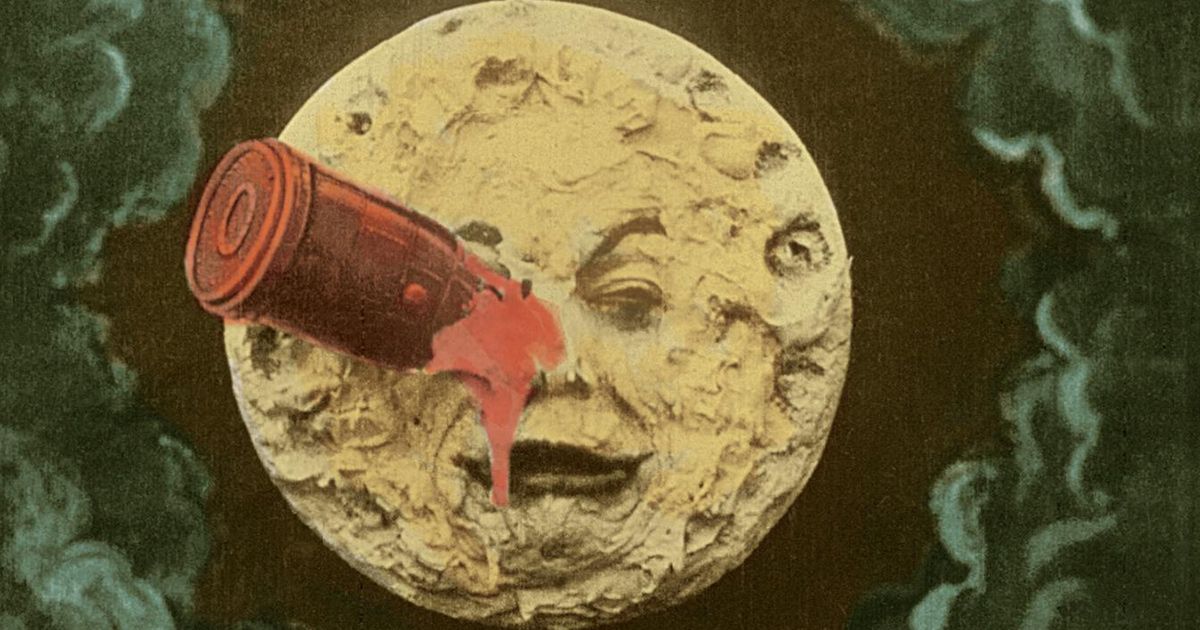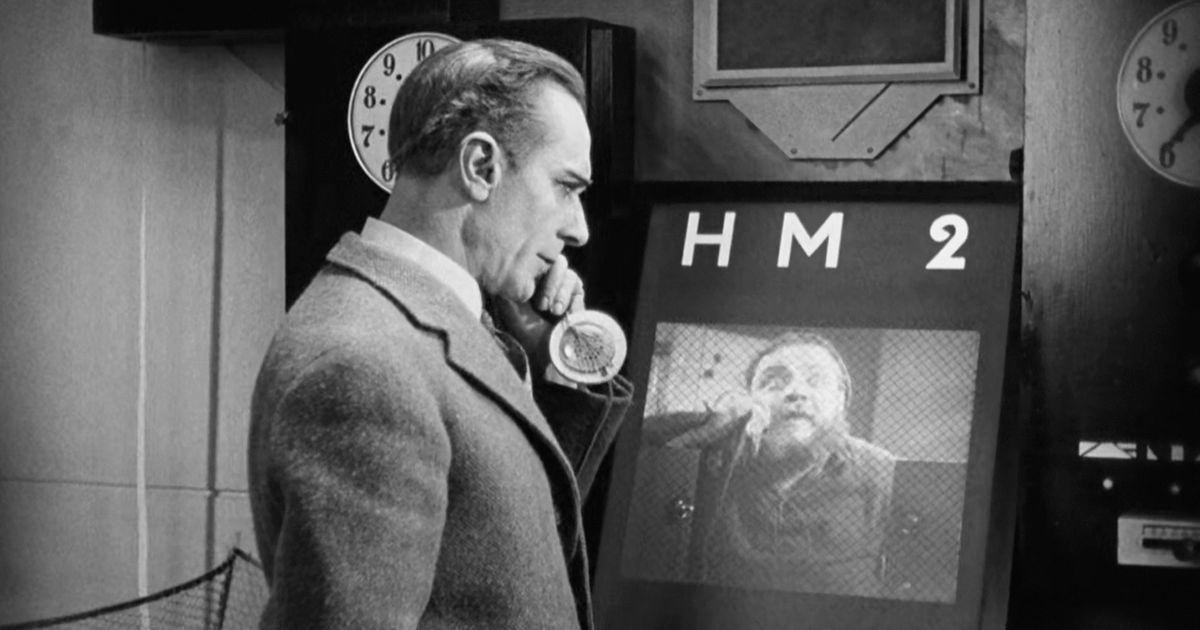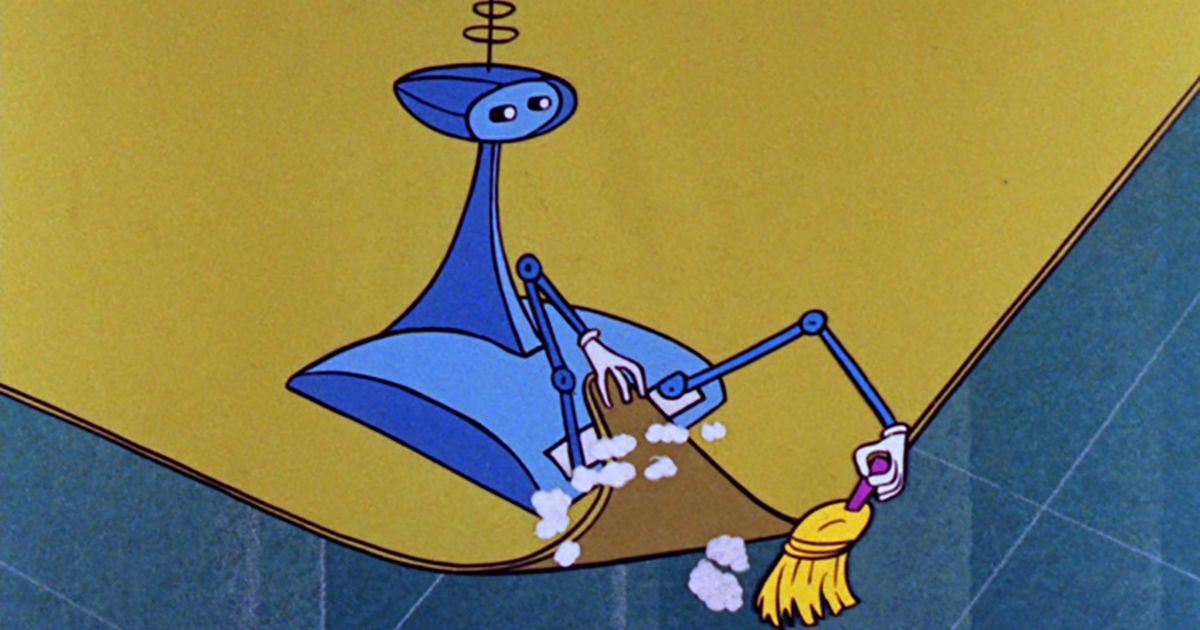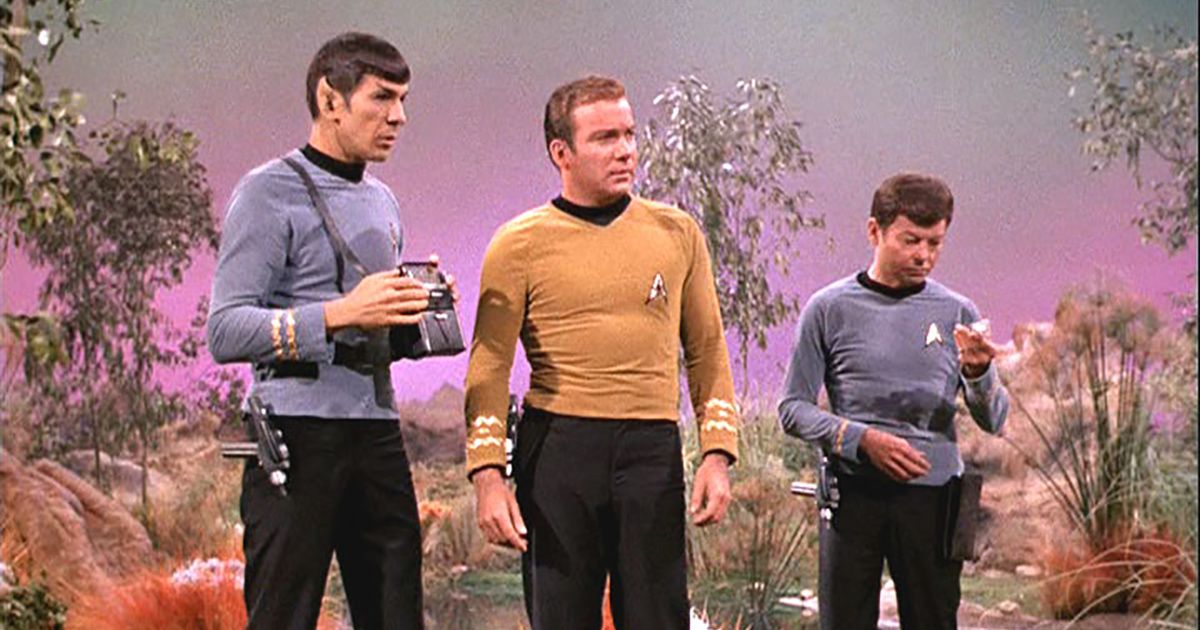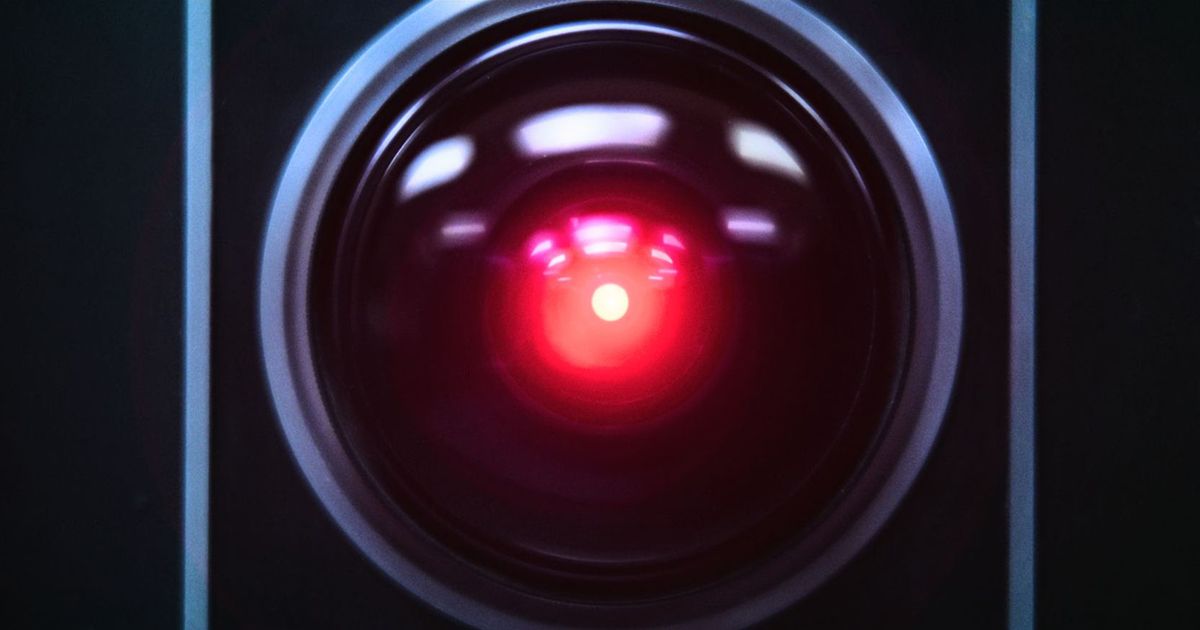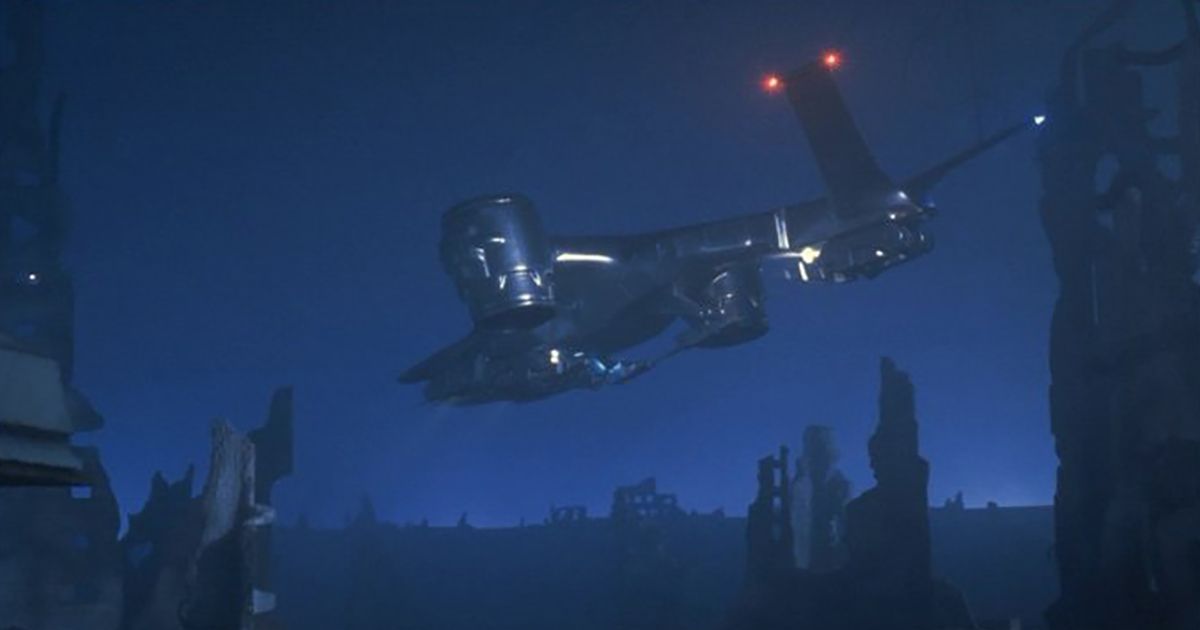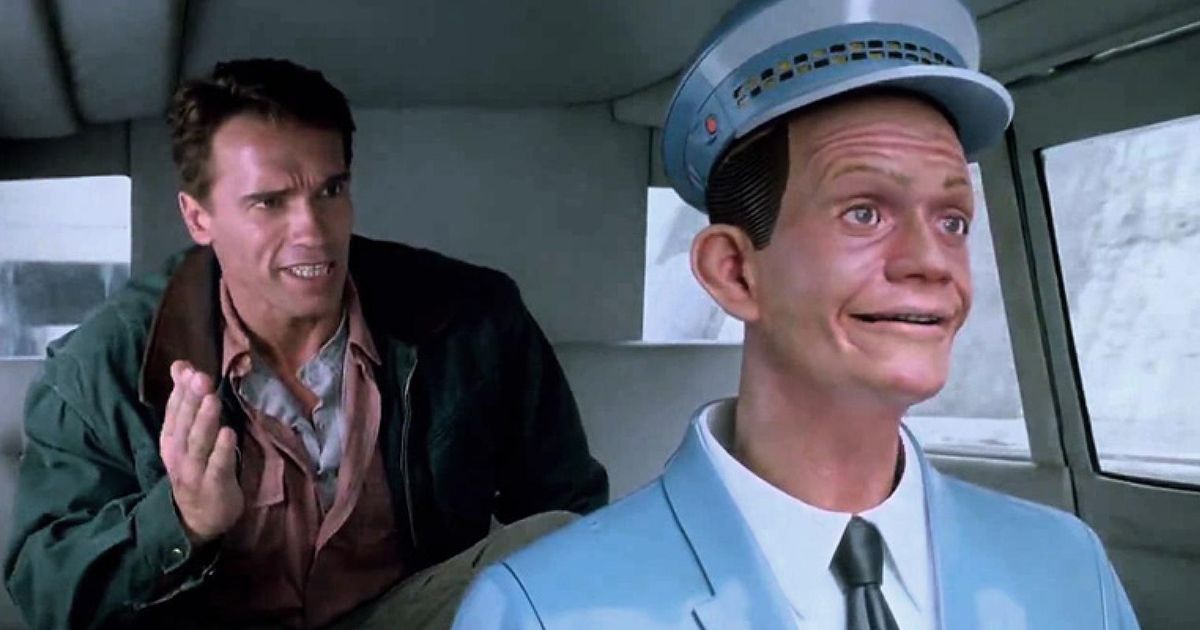
[ad_1]
From the very beginnings of both the film and television industries, science-fiction productions have stirred the public’s imagination. Their success is due not only to entertaining audiences, but also predicting and even inspiring inventions that eventually become reality, sometimes decades later. Here is our history of the future, as shown in seven classic sci-fi movies and shows.
7 The Moon Landing – Le Voyage dans la Lune (A Trip to the Moon) (1902)
Pioneering French filmmaker Georges Méliès’s 1902 masterpiece Le Voyage dans la Lune (A Trip to the Moon in English) was largely inspired by the writings of famed author Jules Verne. But it took Méliès to bring the fantastical adventure to the screen, imagining a voyage to the lunar surface almost 70 years before it actually happened in 1969. In danger of being forgotten, the short was rediscovered and rescued from obscurity decades after its initial release. The scene in which a space capsule lands in the eye of the Man in the Moon has become iconic, and the film is now widely considered one of the most influential in history.
6 Video Calls – Metropolis (1927)
Considered the first feature-length science-fiction film, Fritz Lang’s Metropolis was way ahead of its time when released in 1927. Perhaps best known for its depiction of a human-looking robot android, the film also introduced the idea of a telephone with a screen. Made at a time when fewer than 40% of households in the United States had installed a traditional audio phone, the foresight to imagine a future with video calls is remarkable. Indeed, it is only in the past 20 years that video calls have become commonplace. Despite mixed reviews at the time of its release, the film is now considered one of the greatest silent films of all time.
5 Robotic Vacuums – The Jetsons (1962-1963)
Following the success of The Flintstones and their prehistoric adventures, Hanna-Barbera turned their attention to the future with The Jetsons. The world depicted is full of technological wonders: the very first episode featured a large flat-screen television, and the final original episode found Elroy watching The Flintstones on his watch. But the series, which only ran for one season (though later revived in the 1980s), is perhaps best remembered for its many gadgets meant to make domestic life easier. In particular, a small autonomous robotic vacuum is deployed by the push of a button, not unlike the real-life Roomba series by iRobot first released 40 years later in 2002. Of course, the Jetson family also had Rosie (sometimes spelled Rosey) the Robot, often shown with a feather duster or even her own vacuum cleaner, for all of their other cleaning needs.
4 Mobile Devices – Star Trek (The Original Series) (1966-1969)
The communicators from the original Star Trek television series are repeatedly credited with inspiring mobile phones. Indeed, no less than Martin Cooper, the man who led the team that built the first handheld cellular phone and made the first call with it in 1973, himself acknowledged Captain Kirk. He later admitted that work had begun long before Star Trek aired, and Dick Tracy’s wristwatch radio from the 1940s was equally, if not more influential. Still, the voyagers on Star Trek used many mobile devices on their journey, including multifunctional tricorders and portable universal translators. Today, similar tasks are performed by smartphones and wearables like smartwatches.
3 A.I. Voice Assistants – 2001: A Space Odyssey (1968)
While most of the predictions made in 2001: A Space Odyssey did not come to pass, at least not by the year 2001, some inventions from the 1968 film have become reality. A man on a business trip making a video call to his daughter at home is now an everyday occurrence, as is watching movies on a tablet, and both are shown in the film. But perhaps the best prediction was that one day we would talk to computers, that they would understand what we said, and would respond in voices of their own. The character of HAL 9000 is just a voice and a red light, but not that different from Siri, Alexa, and other real-life voice assistants powered by Artificial Intelligence introduced in the last decade.
2 Military Drones – The Terminator (1984)
As far as we know, there has never been a killer robot from the future hunting anyone down, as in 1984’s The Terminator. But one terrifying scene from the film’s bleak, robot-dominated world of tomorrow included armed flying machines. This remained science-fiction only until 2001, when the US launched the MQ-1 Predator, the first known remote-controlled weapons-firing drone, in its war on terror. Now the military can carry out a deadly attack from thousands of miles away, though an ethical debate continues to question whether it should. Even more troubling are reports of drones making targeting decisions themselves.
1 Self-Driving Cars – Total Recall (1990)
If there’s a recurring theme on this list, it’s “autonomy,” specifically machines doing tasks that once required humans. Such is the case with the “Johnny Cab” self-driving taxis in the original Total Recall. This was not a new idea (Leonardo da Vinci designed an autonomous cart powered by springs in the 1500s), and TV’s Knight Rider was popular for its depiction of an advanced car named KITT in the decade before Total Recall was released in 1990. What the film introduced was the all-too-real idea of a car that doesn’t understand what the passenger wants. After trying to give it verbal instructions, Arnold Schwarzenegger becomes so frustrated that he rips the animatronic driver off its base and takes control himself. Real-life self-driving cars have only recently become a reality, but they are already known for questionable decisions with sometimes deadly results. Notably, after spending hundreds of millions of dollars on development, ride service Uber announced in late 2020 that they were abandoning self-driving cars, in part due to lawsuits.
[ad_2]
Source link


